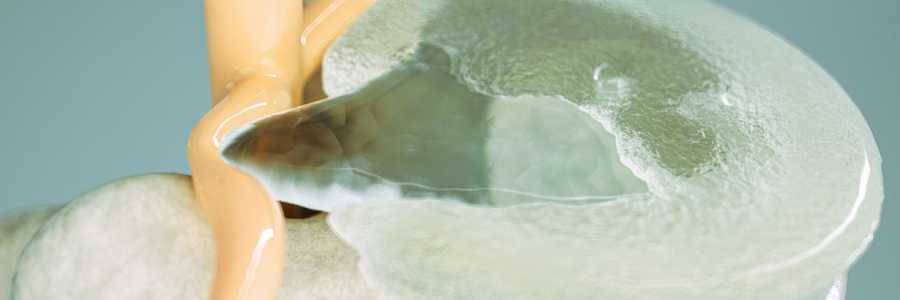Do I Need Spinal Stenosis Surgery?

Key Takeaways
- Spinal stenosis is where the spaces in and around the spine narrow, leading to pressure on the spinal cord and nerves, resulting in pain and neurological symptoms.
- Symptoms include numbness, tingling in extremities, leg cramping, limb weakness, and difficulty walking or balancing. These symptoms may indicate spinal stenosis; you should consult a doctor if they persist for over two weeks.
- The condition can be caused by various factors such as disc herniation, trauma, bone overgrowth due to osteoarthritis, and thickened ligaments. People over 50 are at higher risk, but younger individuals may also experience it.
- Treatment options for spinal stenosis include conservative approaches like physical therapy, pain management, and steroid injections, or surgical options such as laminotomy, laminectomy, and laminoplasty if necessary.
The spine is a highly mechanical part of the human body. Not only does it serve as a significant neural thoroughfare, but it also supports a fair amount of body weight. And, of course, this doesn’t even consider the fact that the spine bends and twists as we all go about our day. Your spine does a lot of work—much more than we are often aware of daily.
But, because of these very facts—because the spine is such a busy place—it also can succumb to a slew of potential problems. After all, anything that moves will eventually wear down. It’s just a natural part of physics and the aging process. Some people are fortunate enough to go their entire lives without experiencing any significant problems.
But, even these people are subject to wear and tear degeneration—symptoms or not. Of course, some people experience much more trouble than others with their backbones. These people may develop osteoarthritis, spinal stenosis, slipped or herniated discs, and much more. Where you fall in all of this will depend on a large variety of both observable and unknowable factors.
But today, we are here to talk about one condition in particular: spinal stenosis. First of all, what does “stenosis” even mean? Well, that’s an excellent question. Spinal stenosis causes the spaces in and around your spine to narrow. That may not sound like a significant deal, but this can put tremendous pressure on nearby nerves and adjacent structures. When your nerves are being compressed, you will feel that in the form of pain and other neurological symptoms.
Symptoms of Spinal Stenosis
First and foremost, spinal stenosis can occur at different spine levels. Generally speaking, the two main types are cervical and lumbar stenosis. Naturally, cervical stenosis refers to the neck as the site of the condition, while lumbar stenosis involves the lower back. Additionally, spinal stenosis can occur at multiple levels of the spine at the same time. Unfortunately, that means a patient could potentially have both cervical and lumbar stenosis.
But that’s just location, right? How do I know if I even have this condition? Here is a general list of symptoms to keep an eye out for:
- Numbness or tingling in the extremities
- Noticeable weakness in the limbs
- Difficulty walking and keeping balance
- Neck and/or back pain
- Cramping in the legs after standing for long periods
If you are experiencing any of these symptoms and they are not abating within two weeks, it may be time to see a doctor. Of course, that isn’t to say that you must wait two weeks before seeing your physician. If you feel like your symptoms are severe enough and conservative methods aren’t helping, contact your doctor right away. After all, the less time you spend in discomfort, the better.
Usually, your doctor will exhaust all conservative options before opting for surgery. However, in some cases when the condition is severe enough, your doctor may opt for a surgical procedure right away. Don’t let this scare you. Great strides have been made in the realms of minimally invasive back surgery. Procedures for spinal stenosis are both incredibly safe and highly successful.
Spinal Stenosis Causes & Risk Factors
Unfortunately, some people are born with a smaller-than-average spinal canal. These people are more susceptible to spinal stenosis. However, in most cases, the condition occurs in patients who are above the age of 50. While the cause of spinal stenosis is typically degenerative, that doesn’t mean that young people are immune to narrowed spinal canals. The condition may also occur in those who have had an injury or those with a congenital deformity such as scoliosis. In other words, being 25 doesn’t rule spinal stenosis out.
As far as underlying causes are concerned, here are some conditions that could be causing your stenosis:
- Disc Herniation: Cracks in the outer shell of a disc may result in its softer, internal material leaking out. This ruptured disc material may then pressure nearby nerves or the spinal cord.
- Trauma: Fractures in the vertebrae may lead to displaced bone that can damage nearby structures. Additionally, any swelling around the spine will narrow the surrounding spaces.
- Bone Overgrowth: Degenerative conditions such as osteoarthritis may lead to the formation of bone spurs. These ossified protrusions usually cause pain as they damage nearby structures.
- Thickened Ligaments: Ligaments are responsible for holding the spine’s bones together. Over time, these structures may stiffen and become thicker. When this happens, the ligaments may apply pressure to the adjacent spaces in the spinal canal.
Of course, these are just a few of the most common examples. Spinal stenosis may also be the result of abnormal growths or tumors. It all depends on the specifics of your case. For more information, make sure to ask your doctor plenty of questions.

Fig. 1: Spinal stenosis from herniated disc
Spinal Stenosis Treatment
As with most medical conditions, spinal stenosis treatment is categorized as either conservative or surgical. In most cases, your doctor will attempt to exhaust all non-intrusive methods before considering surgery. However, the exception to this rule is if they deem your case severe enough to warrant immediate surgery.
Conservative Methods of Treating Spinal Stenosis
First of all, there are many different prescription medications available to those who suffer from spinal stenosis. As you might expect, pain may be reduced with NSAIDs such as Advil or acetaminophen (Tylenol). But did you also know that antidepressants and anti-seizure drugs can help ease chronic pain as well? There is also the option of temporary, guided use of opioids. But, due to their addictive nature, your doctor will try to avoid this form of treatment when possible.
Physical therapy is another excellent conservative treatment for spinal stenosis. A lot of people who have spinal stenosis tend to become less active as a result of their discomfort. This is only natural. After all, wouldn’t you become less active in constant pain? The objective of PT is to remedy this problem, injecting a little activity into the patient’s sedentary lifestyle. Doing so has the added benefit of strengthening muscles, enhancing flexibility, and reducing pain.
Lastly, there is always the option of steroid injections. With spinal stenosis, your nerve roots will become agitated and swollen at the points where they are being pinched. While steroid injections can’t fix the condition, they work wonders to reduce inflammation.
Spinal Stenosis Surgery Options
If none of the above methods seem to work, consider taking the spine surgery route. Spinal stenosis surgery aims to relieve pressure on the spinal cord or affected nerve roots by increasing the space within the spinal canal. There are several ways to accomplish this task, but the most common methods include:
- Laminotomy: With this procedure, your doctor will remove a portion of your lamina—typically just large enough to relieve pressure.
- Laminectomy: During a laminectomy, the performing surgeon will remove the posterior portion of the lamina on the affected vertebrae. In some instances, the affected vertebrae may need to be fused to an adjacent bone via metal hardware to maintain spinal stability.
- Laminoplasty: This procedure is only performed for cervical stenosis. This surgery generates space within the spinal canal by creating a hinge on the affected vertebra’s lamina. Metal hardware may also be used in this procedure to bridge the gap in the opened section of the spine.
Back in the day, these surgeries were only available as traditional open-back procedures. Today, many conventional spine surgeries have minimally invasive variants that make them much safer and more effective. Minimally invasive procedures typically use smaller incisions to accomplish the same goal. Moreover, they involve pushing tissues (including muscle) to the side rather than cutting through them. In many cases, they can be done on an outpatient basis allowing for same-day discharge from the surgical center.
Contact Us
Have you been experiencing back pain for two weeks or more? Have you tried over-the-counter or conservative options to no avail? If so, you may contact our practice at (855) 210-0899. At New York City Spine, you’ll find a team of spine specialists who are highly passionate about back pain relief. We offer the latest and greatest in minimally invasive surgery options at our treatment centers in New York and New Jersey. For more information, contact us today!
Frequently Asked Questions (FAQ)
1. What are the leading causes of spinal stenosis?
Spinal stenosis can be caused by various factors, including disc herniation, trauma or fractures to the vertebrae, overgrowth of bone due to osteoarthritis, and thickened ligaments that narrow the spinal canal. Other causes may include congenital deformities like scoliosis, abnormal growths, or tumors.
2. How is spinal stenosis diagnosed?
Spinal stenosis is diagnosed through physical examinations and imaging tests like X-rays, MRIs, or CT scans. These imaging tests help doctors visualize the narrowing of the spinal canal and determine the severity of the condition.
3. What are the treatment options for spinal stenosis?
Treatment for spinal stenosis typically starts with conservative methods such as physical therapy, medication for pain management, and steroid injections. If these treatments do not provide relief, surgical options like laminotomy, laminectomy, or laminoplasty may be considered, with minimally invasive procedures offering effective results.
